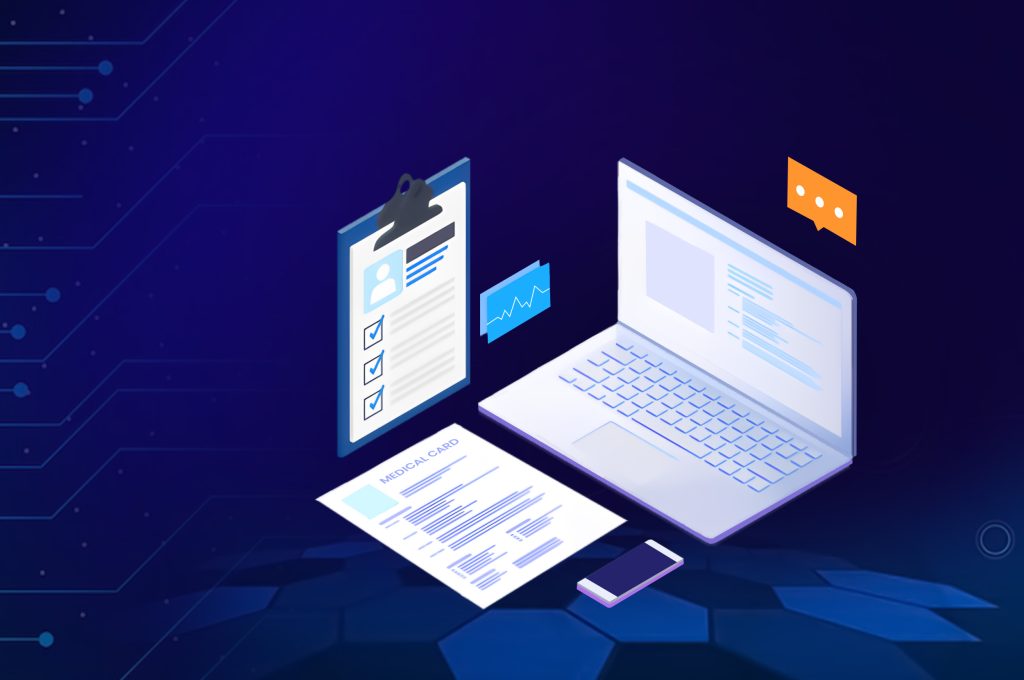Healthcare Staffing Shortages in 2025: Tech-Driven Credentialing to the Rescue
- TronsIT Solutions
- 0 Comments
It’s 2025, and the healthcare system is reaching a boiling point. Healthcare worker burnout—already a significant concern post-pandemic—has escalated into a full-blown crisis. Physicians, nurses, and support staff are leaving the field in droves, citing mental exhaustion, overwhelming administrative burdens, and lack of support. Meanwhile, hospitals and clinics scramble to keep shifts covered and maintain consistent patient care.
Yet, amid the chaos, one solution is emerging: tech-driven credentialing. Faster, smarter, and more accurate than traditional methods, credentialing powered by automation and AI is helping healthcare organizations streamline onboarding, reduce paperwork, and place qualified professionals in roles faster than ever before.
The Numbers Don't Lie: Staffing Shortages Are Critical
According to the Association of American Medical Colleges (AAMC), the U.S. is projected to face a shortage of over 124,000 physicians by the end of 2025. Nursing shortages are even more severe, with the American Nurses Association (ANA) reporting over 1 million open nursing positions nationwide.
These gaps aren’t just numbers—they represent missed appointments, longer wait times, delayed treatments, and declining patient outcomes.
Key reasons for these shortages include:
- Increased burnout and mental health strain
- Delayed licensing and credentialing processes
- Retirement of aging healthcare workforce
- Limited training pipeline and resources for new clinicians
Traditional credentialing processes often take 60 to 120 days, which can delay critical hires and burden already overstretched teams. This is no longer sustainable.
The Role of Tech in Solving the Credentialing Bottleneck
Enter automated credentialing platforms—cloud-based systems that use AI and machine learning to verify education, licenses, certifications, work history, and background checks in a fraction of the time.
These platforms reduce manual paperwork, eliminate human error, and integrate seamlessly with HR systems and applicant tracking tools. More importantly, they ensure healthcare workers can get credentialed and start contributing weeks—or even months—sooner.
Benefits of Tech-Driven Credentialing:
- 70% faster turnaround time for new hires
- Real-time license verification via national databases
- Automated alerts for upcoming expirations or compliance lapses
- Centralized digital records accessible across departments and locations
- Enhanced security and compliance with credentialing standards
In short, automation not only improves efficiency but also helps maintain compliance with regulatory bodies, such as The Joint Commission and state health departments.
Credentialing Technology Impact (2025)
Metric | Traditional Credentialing | Tech-Driven Credentialing | Source |
Average Time to Credential | 90 days | 25–30 days | Becker’s Hospital Review, 2025 |
Error Rate in Verification | 18% | <3% | NAHQ Credentialing Audit Report |
Onboarding Completion Time | 45–60 days | 15–20 days | McKinsey Health Workforce Study 2025 |
Overall Staff Satisfaction (HR Teams) | 61% | 87% | HIMSS Workforce Efficiency Survey |
The Medical Staffing Crisis 2025 Is Fueling Innovation
As the 2025 medical staffing crisis deepens, organizations are forced to rethink their recruitment and credentialing strategies altogether. This isn’t just about filling jobs—it’s about survival.
Hospitals are increasingly turning to centralized credentialing departments supported by AI-powered dashboards and real-time analytics. These tools provide leadership visibility into hiring pipelines, delays, and expiration risks—all from a single screen.
Some leading-edge health systems are even leveraging blockchain-based credentialing to ensure credentials are verified and portable across networks, thereby reducing redundancy and saving precious time.

Real-World Use Case: From 90 Days to 30 with Tech
A regional health system in the Midwest struggling with high vacancy rates implemented an AI-driven credentialing solution in early 2025. The result?
- Credentialing time dropped from 92 to 28 days
- New hire onboarding time was cut by 60%
- Clinician satisfaction scores rose by 40%
- HR administrative costs were reduced by 33%
That’s not just digital transformation—it’s a business-critical improvement that directly impacts patient care.
Final Word: Retaining Talent Starts with Smarter Systems
The future of healthcare staffing depends on speed, precision, and adaptability. But it’s not just about bringing new talent to the door—it’s about keeping them. In 2025, organizations dealing with high clinician turnover rates are finally realizing that tech-enabled credentialing isn’t just about compliance—it’s also about retention.
When staff feel supported with smooth, fast, and transparent onboarding, they’re more likely to stay. When outdated processes don’t bog down HR teams, they can focus on what matters: hiring the best talent and supporting their careers in the long term.
If you’re looking for a partner to build or deploy your tech-driven credentialing system, look no further than TronsIT Solutions. As leaders in custom healthcare IT solutions, they specialize in designing end-to-end systems that streamline credentialing, ensure compliance, and scale with your workforce’s needs. Their approach is:
- 100% HIPAA-compliant
- Fully integrated with HR and EHR systems
- Designed for rapid deployment and high ROI
For more information, explore our website!
Related Posts
Compliance Nightmares in Healthcare? These IT Solutions Keep You Audit-Ready
- TronsIT Solutions
- May 28, 2025
Let’s be real healthcare data breaches are no longer just a possibility in 2025; theyR ..



